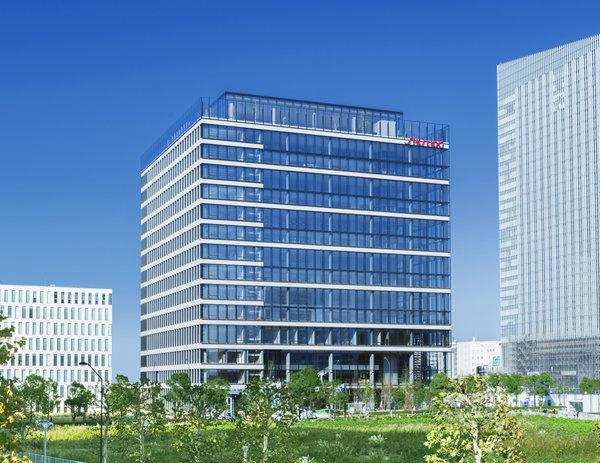YOKOHAMA, Japan — When the skin care company Shiseido opens its 76,000-square-foot “global innovation center” in this city 20 miles south of Tokyo to the public next week, there will be a grand S-shaped staircase for the taking of selfies; a terrace on the 15th floor, also ideal for selfies; and a theater for lectures and demonstrations, which, presumably, will show up in the background of many selfies.
A global innovation center tailored for social media, or S/PARK, as Shiseido is calling this complex of research labs and public space, is part of a many-layered rebranding underway for the 147-year-old maker of skin care, makeup and perfume.
While the West has gone mad for Korea’s K-Beauty, deploying snail serum face masks at sleepovers and on #selfcaresundays, J-Beauty isn’t exactly a global phenomenon. Shiseido, which has 46,000 employees around the world and is aiming for sales of $11.6 billion by 2020, would like to change that.
“Japanese beauty has more to do with, if I may get a little philosophical, searching for the truth,” said Daniel Bruzzone, a senior vice president of marketing for the company. “You will find the Japanese more scientific and concerned with technology than the very cool, attention-grabbing, colorful and playful K-Beauty.”
Shiseido was founded in 1872 in Tokyo’s Ginza district, the Silicon Valley of its day. (The first Shiseido shop, modeled after a Western apothecary, is said to have introduced toothpaste to Japan.)
The company’s name means “virtue of the earth,” and even as it has expanded, acquiring brands including Nars, Bare Minerals and Laura Mercier, it has largely abided by the ethos of its first president, Shinzo Fukuhara: “Let the product speak for itself.”

If you build it, maybe they will come and buy cosmetics: The Shiseido center abuts a park.
“As a Japanese company, we are a bit humble and shy,” Mika Inoue, the senior vice president of the global innovation center, said on a recent morning at Shiseido’s Ginza headquarters. She wore a beige pantsuit and a mustard-colored blouse with a bow at the neck.
“In the past, we have lost opportunities because we didn’t speak up,” Ms. Inoue said. “These SMS times are good for us.”
Two years ago, Ms. Inoue and her team began sketching out a plan for the global innovation center, which includes a museum, skin diagnostic “beauty bar,” restaurant and a research and development facility (these are usually “far from the city,” she said, somewhere quiet, calm and green”).
At the beauty bar, visitors will be able to participate in clinical-seeming tests, like one in which a technician runs a roller-ball-tipped sensor over the face, analyzes the data and recommends products and procedures.
Shiseido is testing new products, like “second skin,” a patented cream that tightens skin, smooths irregularities and peels off like a Band-Aid; and Optune, a contraption that purports to analyze a user’s mood, health and skin quality, then factors in the weather, and pulls from five cartridges to dispense a customized product, like an espresso machine.
Last year, to attract more millennials, the company overhauled its Shiseido makeup line, axing almost 100 products. “We conducted a lot of surveys,” Ms. Inoue said. “Compared to people in their 40s and 50s, the customers in their 20s and 30s have a different lifestyle. They also have a lot of doubt. They’re not confident.”
“So we spend a lot of time thinking about how we can make them confident and support their life,” Ms. Inoue said. “They have many important events ahead, and they don’t want to fail — a job interview, a serious boyfriend.”
She was speaking of women but said Shiseido is also “investigating men’s physiology and their needs, their lifestyle, who they want to become.” The company first came out with a men’s line in 1959.
“We realized men are also really concerned with how others see them,” Ms. Inoue said. “Impression is very important.”







